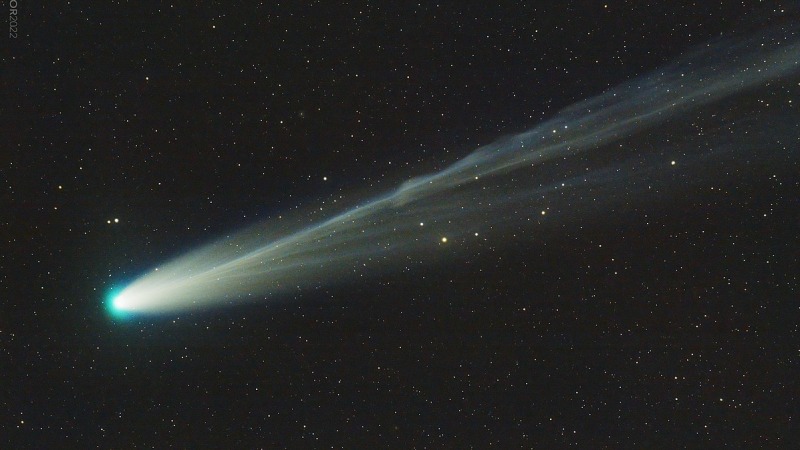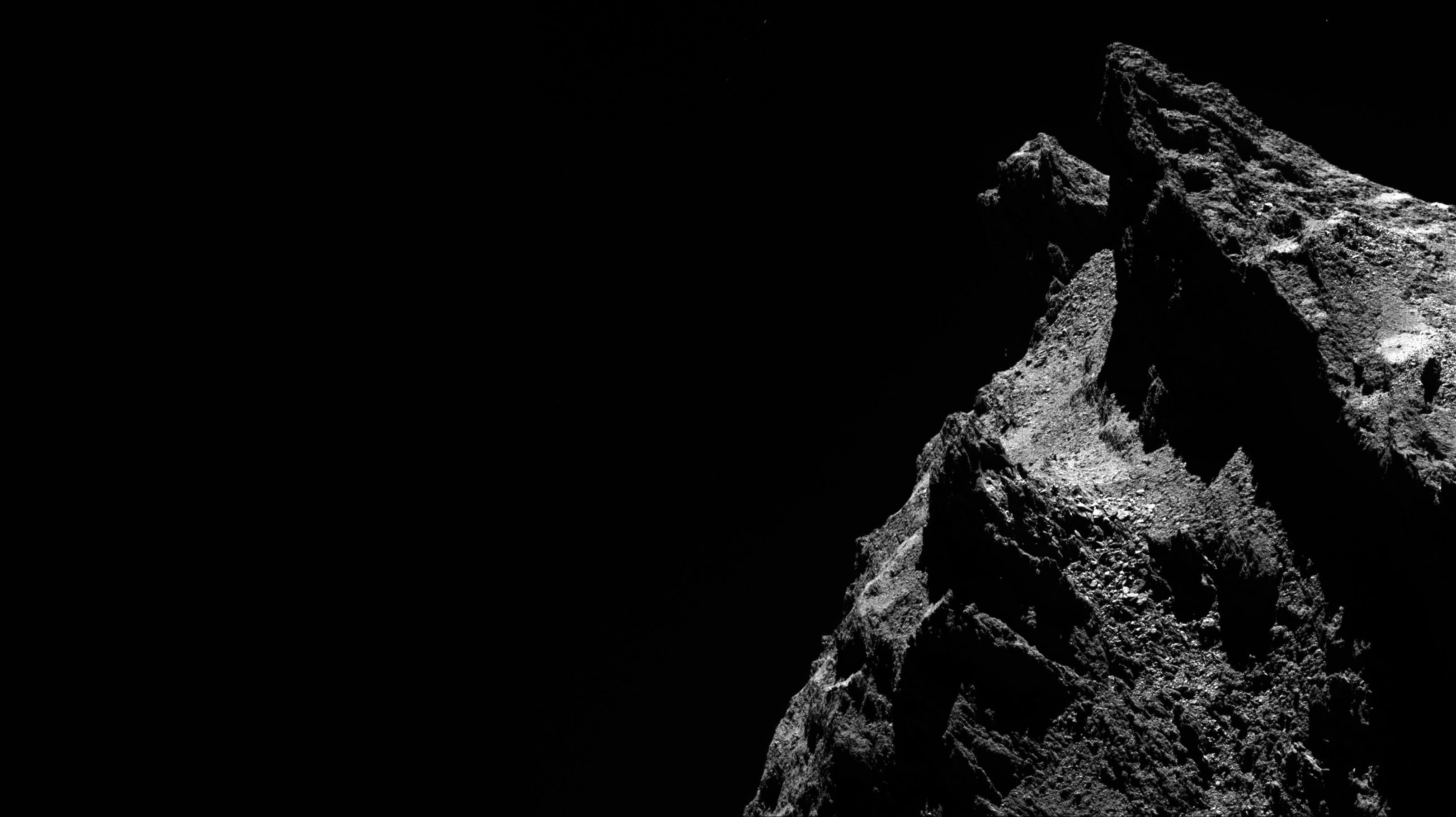Comets fade even as deep in space as Saturn's orbit, scientists find
It's not just about the sun's heat.

When comets first appear near Earth, their bright tails of ionized gas stun observers, but on every subsequent return, they become dimmer.
Comets are essentially balls of dirty ice. Astronomers therefore believed that these objects become dimmer on their repeated returns to Earth because they released too much ice and gas during their earlier visits to the inner solar system. The comets melted and shrank because of the sun's warmth, the thinking goes, so when they return there is less material left to release and therefore a fainter coma.
But a new study by scientists from the University of Oklahoma found that even comets that only skirt the inner solar system and remain beyond the orbit of Saturn fade over time. That makes no sense because, in those far reaches of the solar system, the sun's light is so weak that it shouldn't be able to melt a comet's ice.
In a statement about the new research, the scientists suggest there must be something going on, deep in space, that changes the physical properties of those comets that leads to their fading.
Related: Amazing photos of Comet Leonard in the night sky
The researchers came to this conclusion when they ran computer simulations of comets traveling through the outer solar system, near the giant massive planets Jupiter and Saturn. The models showed that the powerful gravity of these planets alters the comets' orbits.
The comets may have started their journey following so-called highly eccentric elliptical orbits, approaching from the farthest regions of the solar system far beyond the orbit of Neptune, then hurtling toward the sun before disappearing back into the outer reaches for centuries. But with every passage near Jupiter and Saturn, the comets' orbits become more circular and they don't retreat as far from the sun, the study found.
Get the Space.com Newsletter
Breaking space news, the latest updates on rocket launches, skywatching events and more!
"We should therefore expect that the outer solar system has many more comets on these shrunken orbits compared to those on larger orbits," said Nathan Kaib, an associate professor of astronomy at the University of Oklahoma and lead author of the new research.
The only problem is that those results don't match what astronomers actually see.
"Instead, astronomers see the opposite," Kaib said. "Distant comets with shrunken orbits are almost entirely absent from astronomers' observations, and comets with larger orbits dominate our census of the outer solar system."
To explain this strange absence, the researchers posit that the comets must have faded and even though they are there, somewhere beyond the orbit of Saturn, they are no longer visible to our telescopes.
"Fading among distant comets was discovered by combining the results of computer simulations of comet production with the current catalog of known distant comets," said Kaib. "These distant comets are faint and extremely difficult to detect, and comet-observing campaigns have taken great pains to build this catalog over the past 20 years. Without it, this current work would not have been possible."

But to understand what exactly is happening would require more powerful telescopes than scientists can use today. Once those are available, Kaib and his colleagues say, astronomers will probably find out that the outer solar system is full of faded comets.
Astronomers know of comets that orbit between Jupiter and Saturn and regularly burst into powerful eruptions in spite of the cold environment, so it is clear that "dirty snowballs" can lose their matter even far away from the sun.
A study based on the research was published Wednesday (March 30) in the journal Science Advances.
If you're looking for a telescope of binoculars to look at comets, check out our guide for the best binoculars deals and the best telescope deals on right now. Our best cameras for astrophotography and best lenses for astrophotography guides also have tips on how to pick the best imaging gear to snap photos.
Editor's Note: If you snap an amazing comet or night sky picture and would like to share it with Space.com readers, send your photos, comments, and your name and location to spacephotos@space.com.
Follow Elizabeth Howell on Twitter @howellspace. Follow us on Twitter @Spacedotcom and on Facebook.
Join our Space Forums to keep talking space on the latest missions, night sky and more! And if you have a news tip, correction or comment, let us know at: community@space.com.

Elizabeth Howell (she/her), Ph.D., was a staff writer in the spaceflight channel between 2022 and 2024 specializing in Canadian space news. She was contributing writer for Space.com for 10 years from 2012 to 2024. Elizabeth's reporting includes multiple exclusives with the White House, leading world coverage about a lost-and-found space tomato on the International Space Station, witnessing five human spaceflight launches on two continents, flying parabolic, working inside a spacesuit, and participating in a simulated Mars mission. Her latest book, "Why Am I Taller?" (ECW Press, 2022) is co-written with astronaut Dave Williams.









